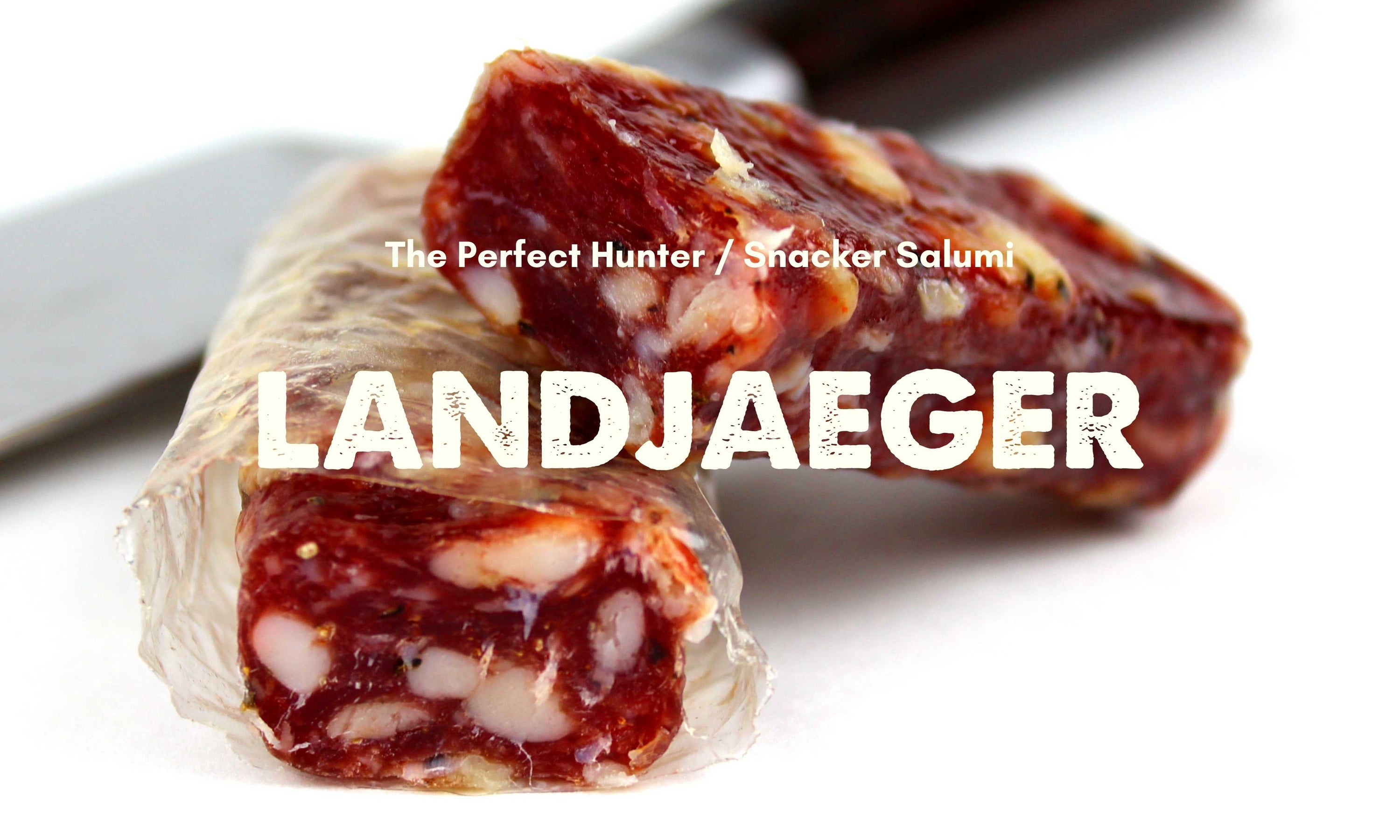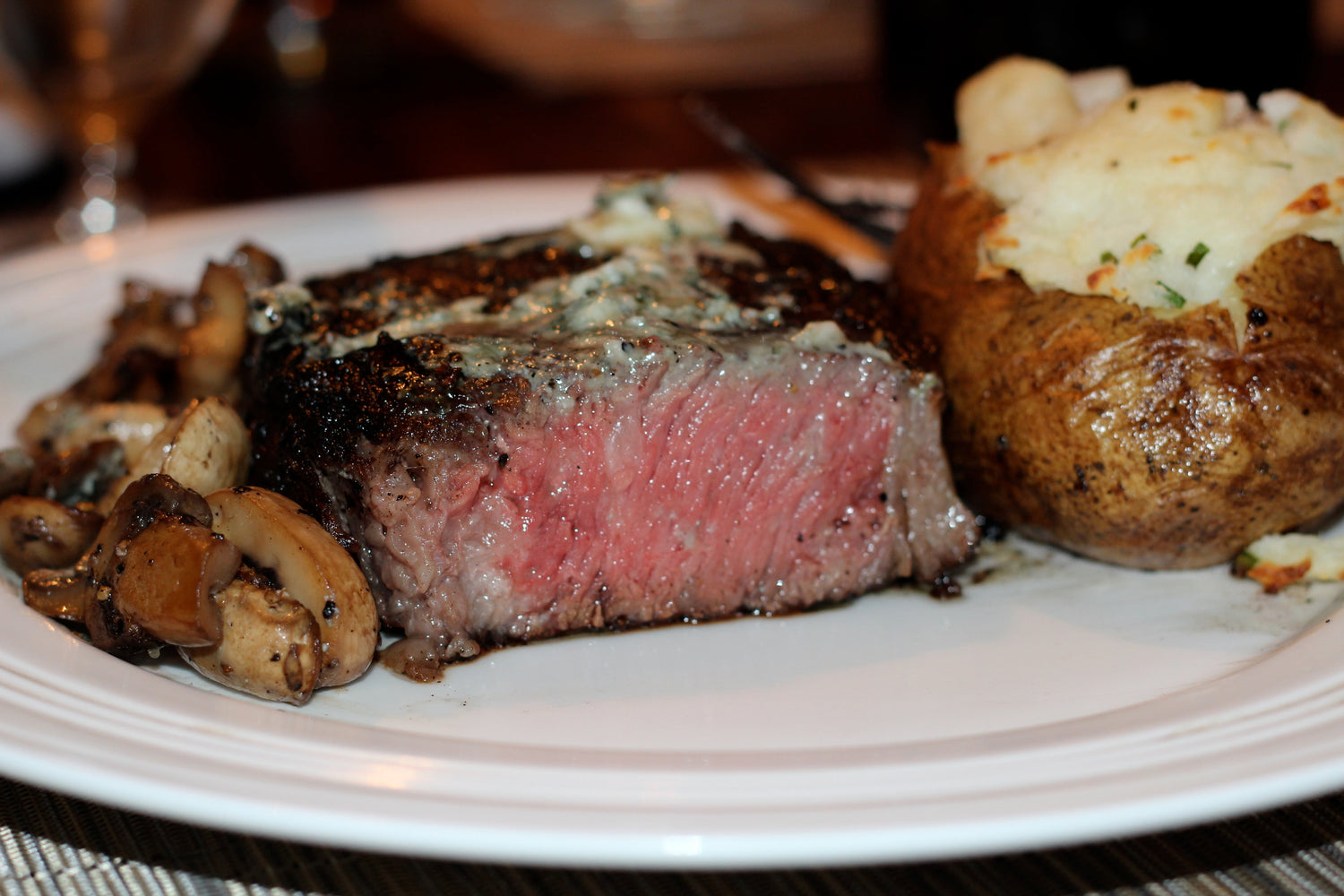Landjaeger, "Hunter’s Sausage," is the original snack stick. It can be made with pork or a mixture of venison and pork back fat. Certainly, avid hunters would put other game meat to use in this smoky, richly flavored, and classically portable dry sausage. Also spelled Landjäger, this dry sausage is often shaped into shorter, slightly flattened chubs--sized to fit in your pocket. It one of our favorite UMAi Dry® Salumi projects--a guaranteed crowd-pleaser for all ages.
Landjaeger is just one of many traditional fermented, slow dried sausages you can master with ease using UMAi Dry. Fermented sausage does require some advanced sausage making techniques, but we've made it as easy as possible to achieve in the comfort of your. kitchen. The critical step is the addition of beneficial bacteria, or starter culture, along with powdered dextrose to get the fermentation going. As the bacteria consume the dextrose, they release lactic acid. This causes the lower pH, develop the flavor, color, and safety. The more acidic environment protects against certain potential pathogens.
When making any fermented, slow dried sausage, there are several steps to ensure food safety. Each step provides another hurdle or barrier to unfriendly pathogens. The first is salt--kosher or sea salt without added iodine. You want to carefully weigh the meat, then calculate 3% of that, and weight out just that much salt. As always with sausage making, your digital scale should be your best friend in the process.
The second critical step is the curing salt--always #2 curing salt, which is slow acting to continue gradually breaking down throughout the long drying process to protect the sausage as it transforms in to meat candy.
The third step is for both safety and flavor--fermentation. With the help of a meat starter culture (we recommend Bactoferm T-SPX which ferments reliably at room temperature), and powdered dextrose to "feed" the culture, you can easily ferment to a safe pH in a protected room temp environment within 24 to 72 hours. When fermenting sausage, you want to achieve a pH below 5.3. Generally, watching for the "blush" (see the chart below) is sufficient to assure you fermentation is successful. You can also use a pH meter, often available from home brewing suppliers.
Safe, successful fermentation requires three things:
- Fresh starter culture.
- Enough starter culture and powdered dextrose.
- Warm water with no chlorine to provide a welcome environment for the starter culture and dextrose to begin life together.
- A large, cold grind for best particle definition.
- A protected room temp fermentation environment--no drying breezes.
- From 24 hours to no more than 72 hours.
If sealed and stored in a freezer, your T-SPX starter culture should remain effective for 18 months from the date of manufacture. Don't be afraid to be generous with starter culture. It will gradually grow less "lively" as it gets older. We suggest adding incrementally more starter culture as you packet of T-SPX ages. If exposed to moisture, or is not stored at freezing, there is no quick way to test the T-SPX.
The pH drop is energized by adding enough dextrose. Dextrose is a sugar that feeds the bacteria. Typically, more dextrose equals more lactic acid production equals a more tangy flavor. to some degree, by limiting the food, you can control how low the pH drops. Sausage experts tell us that T-SPX tends to have limited ability to survive lower than the range of 5, so you it is unlikely you can create a tangy, sour flavor with this starter culture.
As always with dry sausage, the large, cold grind is critical to fermentation, drying and an appetizing finished product. Preserve this when you grind, but protect this when you stuff--never accidentally "re-grind" the meat by using a kitchen mixer stuffer attachment! Either use a dedicated vertical stuffer, or find. creative way to hand stuff through a piping bag, a jerky gun or other. One UMAi Dry master told us he stuffs just by pushing the meat through the cut corner of a tough ziplock bag!
You can ferment either rest on an open wire rack or hanging. The perfect fermenting environment is as easy as an unused oven or the basement shower. Don't make the mistake of one sausage maker who didn't tighten his zip ties--and found several chubs surrendered to gravity--sausage fallen to the floor!
After your salumi takes on a slight "blush," you will know fermentation is complete. Never ferment longer than 72 hours. Transfer the meat to a regularly used modern frost free kitchen refrigerator located in a room temperature environment for drying. Be sure to weigh several sticks, record the start weight at this time, calculate and mark the target weight loss of 35-40%.

SMOKERS BEWARE: UMAi Dry fermented sausage making practices are not compatible with typical cold smoking. The moisture and oxygen permeable membrane that makes fermented, slow dried sausage so easy, makes cold smoking tricky. If you smoke UMAi Dry, fermentation will fail, the membrane will block, and you will unable to effectively dry the sausage as recommended. Instead, to achieve that beloved smoky flavor, we recommend one of the following alternatives to cold smoking:
- Use UMAi Dry Landjaeger Salumi Spice Blend for 5 lb. It includes the seasonings you need for authentic landjaeger.
- Add a tiny amount of either high-quality liquid or powder smoke to your own recipe.
- All the sausage to ferment, then dry to the desired finish weight (start weight minus 35-40%). Once finished, peel away the UMAi Dry and cold smoke the finished product.
You hope you will enjoy this recipe. If you have any questions, please reach out to us via chat or join the great community on the UMAi Dry Salumi, Charcuterie and Dry Aged Steak Facebook group.




